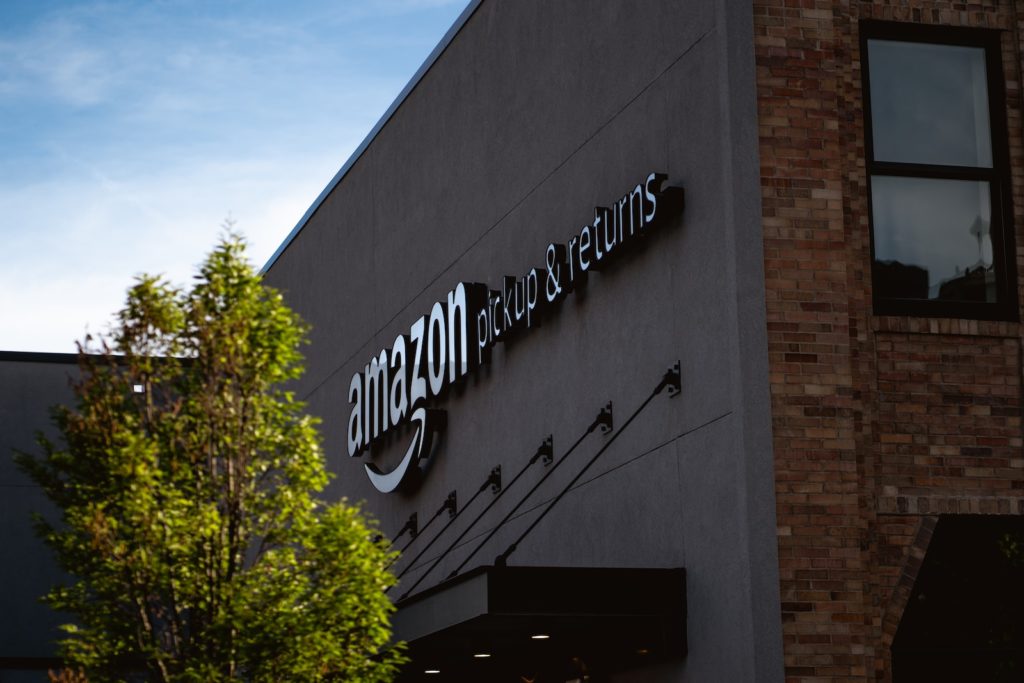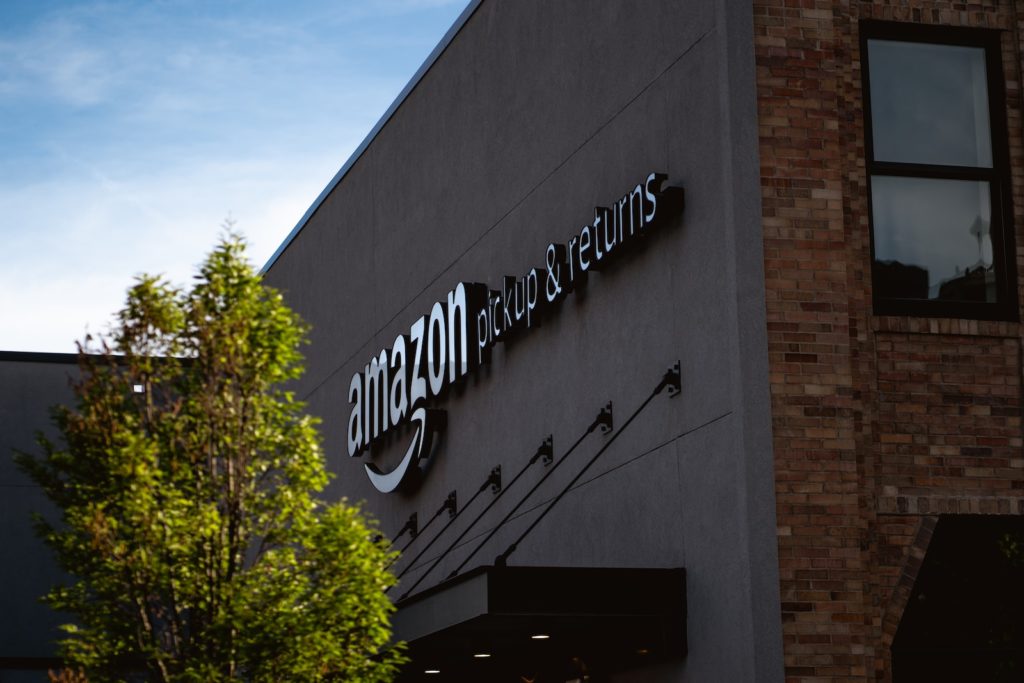
Ever wondered about the epic journey behind your easy ‘click and receive’ experience on Amazon? Imagine, if you will, a river. A small stream at first that turns into a torrent of innovation and growth. That’s the story we’re diving into today – the riveting history of Amazon.
The tale begins in a humble garage but quickly sweeps us along to warehouses buzzing with robots. From selling books online to changing how we shop entirely, it’s been quite an adventure.
We’ll explore key moments like going public on Nasdaq, revolutionizing e-commerce with innovative shipping strategies, becoming not just an online store but also a platform for other sellers through Fulfilled by Amazon (FBA), and much more!
Who knows? You might just find yourself chuckling like Jeff Bezos as you uncover unexpected changes and developments in this amazing journey.
Table of Contents:
- The Genesis of Amazon
- Revolutionizing E-commerce with Shipping Innovations
- Transforming from an Online Store to a Platform
- The Kindle Revolution and E-book Dominance
- Amazon’s Foray into Cloud Computing
- Multimedia Services and Voice Assistant Technology
- FAQs in Relation to History of Amazon
- Conclusion
The Genesis of Amazon
Back in 1994, a spark ignited within Jeff Bezos that would forever change the landscape of online retail. Setting up shop in his garage, he started Amazon.com, an online bookstore.
Founding and Initial Success
Fueled by determination and vision, Bezos sold the first book titled “Fluid Concepts and Creative Analogies”. This marked not only the start of company profits but also positioned Amazon as a trailblazer in e-commerce.
In just two months after its launch, sales rocketed to $20,000 per week – a testament to the untapped potential of selling books over this new thing called ‘the internet’. It was like discovering an oil well where no one thought to look before.
Going Public
Come 1997, buoyed by early success and with dreams bigger than ever before; Amazon took a leap forward. The once-small startup went public on Nasdaq at $18 per share. Like jumping from a trampoline into uncharted heights.
This bold move didn’t come without risks. But it did open doors for even more growth opportunities down the line — expanding beyond books into other consumer products or dabbling in tech innovations which were yet unseen.

Revolutionizing E-commerce with Shipping Innovations
In the realm of e-commerce, shipping is a game-changer. It’s not just about getting products from point A to B, but how quickly and cost-effectively you can do it. Let’s explore how Amazon leveraged innovative shipping strategies to attract more customers.
Amazon Super Saver Shipping: The Groundbreaking Move
In an audacious move that rocked the retail world, Amazon introduced free super saver shipping for orders over $99 in 2001. This initiative broke traditional barriers between online retailers and consumers by reducing delivery costs significantly.
This savvy business maneuver transformed customer expectations across industries as people started to appreciate buying without hidden fees or extra charges at checkout. As other retailers scrambled to catch up, Amazon continued its relentless march towards e-commerce domination.
The Birth of Amazon Prime
A few years later in 2005, Amazon once again disrupted industry norms with another significant innovation – Amazon Prime. For a yearly fee initially set at $79 (which has since increased), members enjoyed free two-day shipping on eligible items—no minimum purchase required.
This offer was unheard-of back then. Customers loved it because they could order anything from books to consumer electronics without worrying about meeting a certain threshold or waiting forever for their packages.
The allure of fast and “free” deliveries helped foster tremendous customer loyalty—a factor instrumental in driving recurring purchases while helping cement Amazon’s position as a top player within the crowded e-commerce landscape.
Beyond Fast Shipping: Prime’s Evolution
Amazon didn’t stop at fast shipping. Over time, Amazon Prime has evolved to include an array of benefits such as streaming video and music, unlimited photo storage, early access to deals, and more – driving customer loyalty through a comprehensive suite of perks.
This suite of perks not only enticed new members but also ensured existing ones saw value in retaining their subscriptions. In this way, Amazon successfully converted an innovative shipping solution into a comprehensive loyalty program that keeps customers hooked.
A Look Ahead
Amazon’s bold approach to innovation, particularly in delivery, is what truly sets it apart in the race for e-commerce dominance.
Key Takeaway:
Amazon’s been a real trailblazer in the e-commerce world, thanks to its clever shipping tactics that keep customers coming back. Remember when they shook things up by offering free super saver shipping for orders over $99 back in 2001? Or how about when they turned heads with Amazon Prime’s two-day delivery in 2005? But it didn’t stop there – Amazon kept pushing the envelope, expanding Prime benefits beyond just speedy deliveries. All these smart moves have helped shape their killer loyalty program.
Transforming from an Online Store to a Platform
The shift of Amazon from a simple online store to a bustling platform is nothing short of remarkable. This wasn’t just growth, it was evolution.
A significant milestone in this journey was the introduction of Fulfilled by Amazon (FBA). Launched with the vision to provide third-party sellers access to their infrastructure and logistics prowess, FBA became an instant hit.
FBA changed how businesses operated on Amazon. No longer were they just vendors; they became partners sharing in Amazon’s vast resources and customer base. With FBA handling storage, shipping, returns and even customer service for orders – sellers could focus more on what mattered most: selling high-quality products.
This gave birth to a new kind of online marketplace where small business owners didn’t need large warehouses or distribution networks. They simply needed great products that customers would love.
Sellers’ Success Equals Amazon’s Success
The Associates program introduced alongside FBA brought about mutual success – when associates did well so did Amazon. By offering commission incentives for sales generated through associate links, both parties shared in the profits creating one big happy family.
An ecosystem began forming around this idea leading many entrepreneurs towards e-commerce platforms rather than traditional brick-and-mortar stores due to its cost effectiveness and scalability advantages.
Growth Unparalleled
In no time at all, there were millions utilizing these services, adding value not only to themselves but also enhancing the overall shopping experience for consumers across the globe, thereby further cementing Amazon’s position as the go-to place to buy anything you might need or want. Today, we see such programs being replicated globally, signifying the profound impact Amazon has had on the retail industry at large.
Amazon’s alteration from an online shop to a platform showed not only the increase of a business but the advancement of electronic commerce itself. This was a shift that changed the landscape forever and continues to shape it even today.
Key Takeaway:
Amazon’s evolution from a simple online shop to a powerful platform revolutionized e-commerce. Initiatives like Fulfilled by Amazon (FBA) and the Associates program opened doors for sellers to leverage Amazon’s massive resources. This shift allowed them to concentrate on delivering top-notch products, reaping shared success. It didn’t just reshape Amazon—it also transformed how small businesses function, inspiring entrepreneurs towards cost-effective operations.

The Kindle Revolution and E-book Dominance
In 2007, the Kindle e-reader revolutionized reading with its launch. Amazon had already established itself as a major player in selling consumer electronics, but with Kindle’s launch, they ventured into new territory.
The world of books took a digital turn as readers embraced this handy device that could store thousands of titles at once. The idea behind it was simple: let book lovers carry their entire library with them wherever they went.
This wasn’t just about convenience though; it also marked an important shift towards e-book publishing. Suddenly, anyone could publish their work without going through traditional publishers or print shops.
But how did this affect the overall book industry? By 2010 – only three years after its launch – e-book sales on Amazon surpassed hardcover sales for the first time ever. That’s not something to take lightly; traditionally printed books had dominated for centuries.
E-books vs Printed Books: The Battle Rages On
In today’s tech-savvy age where everything is available at our fingertips, physical copies of books started feeling like relics from another era. Yet despite these advancements in technology and reader habits shifting towards digital content consumption,
e-books still faced stiff competition from paperbacks and hardcovers which continue to hold onto nostalgia factor among some bibliophiles who love flipping through pages of physical books over swiping left or right on screens.
Digital Reading & Publishing Opens New Doors
- Publishing became accessible for all writers – amateur or professional – making self-publishing mainstream;
- Books became more affordable and accessible for readers, regardless of their location;
- And it gave a major boost to indie authors who could now directly reach out to their audience.
The shift in the book industry necessitated traditional publishers to adjust their tactics so they could not only remain afloat, but also be successful in the digital age. But while they were playing catch-up, Amazon was already several steps ahead.
A Boon for Indie Authors
So, the Kindle platform’s been doing its thing, right?

Amazon’s Foray into Cloud Computing
The journey of Amazon, from an online bookstore to a giant tech company, is truly remarkable. But it was their decision to venture into cloud computing that really changed the game.
In its early stages, Amazon realized the need for robust infrastructure and computing power. The amount of data they had to manage was enormous. To address the issue, Amazon created a platform to store and process their data as well as provide access for other users.
This idea gave birth to Amazon Web Services (AWS). AWS provided scalable solutions for storage, database management, content delivery, and other functionalities that enabled businesses worldwide to grow exponentially without worrying about infrastructure management.
AWS: Powering Businesses Worldwide
AWS wasn’t just another service offered by Amazon; it revolutionized how businesses operate on the internet. With AWS services like EC2 (Elastic Compute Cloud), S3 (Simple Storage Service), or Lambda functions at disposal, companies didn’t have any more barriers in scaling up or down according to demand. This meant huge cost savings as there was no need for investing heavily in physical servers anymore.
Cloud computing allowed companies big or small access resources instantly whenever needed – all thanks largely due Amazon’s pioneering work here. From startups running entire operations on AWS cloud architecture right through Fortune 500 firms leveraging its advanced capabilities AI & Machine Learning – everyone benefits greatly when using these powerful tools developed by our favorite e-commerce behemoth.
The Growth Story of AWS
The growth story of AWS is nothing short than spectacular. In fact, did you know? It now makes up the majority revenue stream within the overall business structure of Amazon – proving just how influential this move into cloud computing was.
Back in 2006, a lot of tech experts raised an eyebrow at AWS’s launch. But soon enough, they got the hang of cloud computing. In no time, businesses worldwide began to jump on board and its popularity skyrocketed.
Key Takeaway:
Amazon’s jump into the cloud with AWS wasn’t just a big deal for them, it changed how companies work online. With scalable solutions like EC2 and S3, AWS knocked down scaling walls and saved businesses of all sizes serious cash. Now, everyone from fresh startups to top Fortune 500 companies reaps the benefits.
Multimedia Services and Voice Assistant Technology
Amazon’s bold strides into multimedia services marked a new chapter in its ever-evolving story. Let’s delve deeper.
Amazon Music and Instant Video
In an ambitious move, Amazon decided to step foot into the realm of music and video streaming. Aiming to take on established players like Spotify and Netflix, they launched Amazon Instant Video along with Amazon Music.
The idea was simple yet audacious: offering a massive library of songs, albums, movies, TV shows right at your fingertips. And it worked. The platform soon saw millions flocking for their dose of entertainment.
Echo and Alexa
Fueled by advancements in artificial intelligence (AI), 2014 brought us another innovation from Amazon – Echo. But what made this device more than just another speaker? It was the introduction of Alexa – a voice-activated assistant capable enough to answer questions or play your favorite tunes merely upon request.
This smart gadget seemed straight out of sci-fi flicks but quickly became part of our everyday lives. With over 100 million devices sold worldwide since launch, there’s no denying that Amazon struck gold again.
- Alexa is now found not only on Echo devices but also across multiple platforms such as cars or other home appliances due to partnerships with various companies – making it ubiquitous indeed.
- The rise in popularity has seen more brands wanting to be part ‘Alexafied’. From Domino’s Pizza ordering system through voice commands all the way up till turning off lights using Philips Hue bulbs, the reach of Alexa is vast.
- Video games have also embraced this technology. For instance, Destiny 2 lets you ask Alexa to equip your gear or connect with friends – a testament to how AI can change our gaming experiences.
By offering these services, Amazon is demonstrating its commitment to revolutionizing our lives and solidifying its status as a major global retailer. It’s evident that Amazon is leveraging AI to revolutionize the way we interact with technology and our daily lives.
Key Takeaway:
Amazon’s plunge into multimedia services was a game-changer. They hit the jackpot with platforms like Amazon Music and Instant Video. But their crowning achievement? The Echo device, home to Alexa – a voice-activated helper that transformed our daily lives by syncing up with all sorts of devices and brands. Whether it’s asking for pizza delivery or switching off lights, even swapping video game equipment, Alexa’s influence is massive.

FAQs in Relation to History of Amazon
What is the history of Amazon?
Amazon’s journey began as an online bookstore in 1994. It expanded into e-commerce, cloud computing, and multimedia services, transforming into a global tech powerhouse.
How did Amazon start and where?
Jeff Bezos kick-started Amazon from his garage in Bellevue, Washington. The initial idea was to create an expansive online bookstore.
What did Amazon first sell?
The first product sold on Amazon was a book titled “Fluid Concepts & Creative Analogies” by Douglas Hofstadter.
Who created Amazon and why?
Jazzed about internet growth prospects, Jeff Bezos founded Amazon. His goal? To establish the most customer-centric company worldwide.
Conclusion
Reflecting on our deep dive into the history of Amazon, it’s clear that innovation is at its core. The journey from a garage-based bookstore to an e-commerce giant shows us just how much transformation can happen when you dare to think differently. From innovating shipping strategies with Prime, transforming retail by welcoming third-party sellers, launching Kindle and dominating the e-book market, venturing into cloud computing with AWS – every step has been about challenging norms.
Innovation wasn’t restricted to products alone. It was also about services like multimedia offerings or Alexa – always adding value for customers in new ways. This evolution tells us one thing: change isn’t only inevitable but necessary for growth. Embrace it as Amazon did, and who knows where your own journey might take you!
